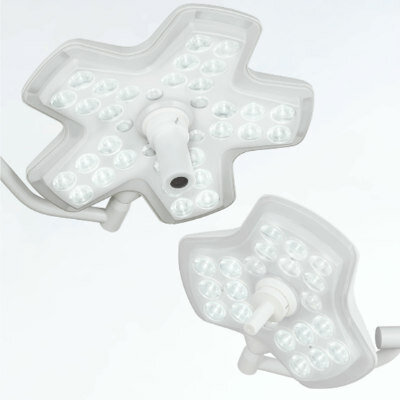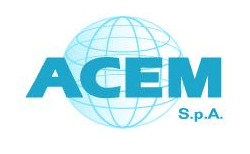Pacifier Biosensor Noninvasively Monitors Newborn Health
|
By HospiMedica International staff writers Posted on 26 Dec 2019 |

Image: A biosensor inside a pacifier can monitor newborns (Photo courtesy of UCSD)
A new study shows how a pacifier-based biosensor can track metabolite levels in saliva, providing a way to diagnose and treat even the smallest of patients.
Developed by researchers at the University of Alcalá (UAH; Madrid, Spain) and the University of California, San Diego (UCSD; USA) the novel pacifier operates as a portable wireless device that noninvasively monitors biomarkers in the infant’s saliva. Mouth movements on the pacifier result in efficient saliva pumping, promoting unidirectional flow from the mouth to a built-in, integrated electrochemical detection chamber that contains an enzymatic biosensor, located outside of the oral cavity.
To examine the capabilities of the pacifier, the researchers used it to detect glucose levels in diabetic adults and compared the results to their blood glucose levels, which showed good correlation. And while the platform has not yet been tested in babies, the researchers suggest that it could simplify infant health monitoring in a real-time and in a selective fashion, and that in the future it could be configured to monitor other disease biomarkers present in human saliva. The study was published on November 5, 2019, in Analytical Chemistry.
“Wearable sensors for noninvasive monitoring of physiological parameters are a growing technology. Especially in neonates, the development of portable and non-harmful monitoring devices is urgently needed, because they cannot provide any feedback about discomfort or health complaints,” concluded lead author Laura García-Carmona, PhD, of the UAH department of nano-engineering, and colleagues. “This initial demonstration of glucose monitoring introduces new possibilities for metabolites monitoring in infants and neonates using saliva as a noninvasive sample.”
Saliva is an extracellular fluid that is 99.5% water plus electrolytes, metabolites, mucus, white blood cells, epithelial cells, enzymes (such as amylase and lipase), and antimicrobial agents (secretory IgA and lysozymes.) The enzymes are essential in beginning the process of digestion of dietary starches and fats. Saliva also performs a lubricating function, wetting food and permitting the initiation of swallowing, and protecting the oral mucosa.
Related Links:
University of Alcalá
University of California, San Diego
Developed by researchers at the University of Alcalá (UAH; Madrid, Spain) and the University of California, San Diego (UCSD; USA) the novel pacifier operates as a portable wireless device that noninvasively monitors biomarkers in the infant’s saliva. Mouth movements on the pacifier result in efficient saliva pumping, promoting unidirectional flow from the mouth to a built-in, integrated electrochemical detection chamber that contains an enzymatic biosensor, located outside of the oral cavity.
To examine the capabilities of the pacifier, the researchers used it to detect glucose levels in diabetic adults and compared the results to their blood glucose levels, which showed good correlation. And while the platform has not yet been tested in babies, the researchers suggest that it could simplify infant health monitoring in a real-time and in a selective fashion, and that in the future it could be configured to monitor other disease biomarkers present in human saliva. The study was published on November 5, 2019, in Analytical Chemistry.
“Wearable sensors for noninvasive monitoring of physiological parameters are a growing technology. Especially in neonates, the development of portable and non-harmful monitoring devices is urgently needed, because they cannot provide any feedback about discomfort or health complaints,” concluded lead author Laura García-Carmona, PhD, of the UAH department of nano-engineering, and colleagues. “This initial demonstration of glucose monitoring introduces new possibilities for metabolites monitoring in infants and neonates using saliva as a noninvasive sample.”
Saliva is an extracellular fluid that is 99.5% water plus electrolytes, metabolites, mucus, white blood cells, epithelial cells, enzymes (such as amylase and lipase), and antimicrobial agents (secretory IgA and lysozymes.) The enzymes are essential in beginning the process of digestion of dietary starches and fats. Saliva also performs a lubricating function, wetting food and permitting the initiation of swallowing, and protecting the oral mucosa.
Related Links:
University of Alcalá
University of California, San Diego
Latest Critical Care News
- 'Universal' Kidney to Match Any Blood Type
- Light-Based Technology to Measure Brain Blood Flow Could Diagnose Stroke and TBI
- AI Heart Attack Risk Assessment Tool Outperforms Existing Methods
- Smartphone Imaging System Enables Early Oral Cancer Detection
- Swallowable Pill-Sized Bioprinter Treats GI Tract Injuries

- Personalized Brain “Pacemakers” Could Help Patients with Hard-To-Treat Epilepsy
- Microscopic DNA Flower Robots to Enable Precision Medicine Delivery
- Origami Robots to Deliver Medicine Less Invasively and More Effectively
- Improved Cough-Detection Technology Aids Health Monitoring
- AI Identifies Children in ER Likely to Develop Sepsis Within 48 Hours
- New Radiofrequency Therapy Slows Glioblastoma Growth
- Battery-Free Wireless Multi-Sensing Platform Revolutionizes Pressure Injury Detection
- Multimodal AI to Revolutionize Cardiovascular Disease Diagnosis and Treatment
- AI System Reveals Hidden Diagnostic Patterns in Electronic Health Records
- Highly Sensitive On-Skin Sensing Monitor Detects Vitamin B6 and Glucose in Sweat
- Artificial Intelligence Revolutionizing Pediatric Anesthesia Management
Channels
Surgical Techniques
view channel
Minimally Invasive Endoscopic Surgery Improves Severe Stroke Outcomes
Intracerebral hemorrhage, a type of stroke caused by bleeding deep within the brain, remains one of the most challenging neurological emergencies to treat. Accounting for about 15% of all strokes, it carries... Read more
Novel Glue Prevents Complications After Breast Cancer Surgery
Seroma and prolonged lymphorrhea are among the most common complications following axillary lymphadenectomy in breast cancer patients. These postoperative issues can delay recovery and postpone the start... Read morePatient Care
view channel
Revolutionary Automatic IV-Line Flushing Device to Enhance Infusion Care
More than 80% of in-hospital patients receive intravenous (IV) therapy. Every dose of IV medicine delivered in a small volume (<250 mL) infusion bag should be followed by subsequent flushing to ensure... Read more
VR Training Tool Combats Contamination of Portable Medical Equipment
Healthcare-associated infections (HAIs) impact one in every 31 patients, cause nearly 100,000 deaths each year, and cost USD 28.4 billion in direct medical expenses. Notably, up to 75% of these infections... Read more
Portable Biosensor Platform to Reduce Hospital-Acquired Infections
Approximately 4 million patients in the European Union acquire healthcare-associated infections (HAIs) or nosocomial infections each year, with around 37,000 deaths directly resulting from these infections,... Read moreFirst-Of-Its-Kind Portable Germicidal Light Technology Disinfects High-Touch Clinical Surfaces in Seconds
Reducing healthcare-acquired infections (HAIs) remains a pressing issue within global healthcare systems. In the United States alone, 1.7 million patients contract HAIs annually, leading to approximately... Read moreHealth IT
view channel
Printable Molecule-Selective Nanoparticles Enable Mass Production of Wearable Biosensors
The future of medicine is likely to focus on the personalization of healthcare—understanding exactly what an individual requires and delivering the appropriate combination of nutrients, metabolites, and... Read moreBusiness
view channel
Philips and Masimo Partner to Advance Patient Monitoring Measurement Technologies
Royal Philips (Amsterdam, Netherlands) and Masimo (Irvine, California, USA) have renewed their multi-year strategic collaboration, combining Philips’ expertise in patient monitoring with Masimo’s noninvasive... Read more
B. Braun Acquires Digital Microsurgery Company True Digital Surgery
The high-end microsurgery market in neurosurgery, spine, and ENT is undergoing a significant transformation. Traditional analog microscopes are giving way to digital exoscopes, which provide improved visualization,... Read more
CMEF 2025 to Promote Holistic and High-Quality Development of Medical and Health Industry
The 92nd China International Medical Equipment Fair (CMEF 2025) Autumn Exhibition is scheduled to be held from September 26 to 29 at the China Import and Export Fair Complex (Canton Fair Complex) in Guangzhou.... Read more














